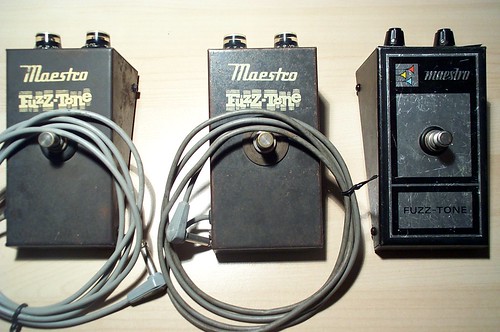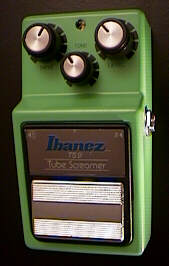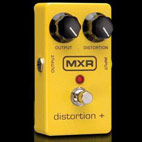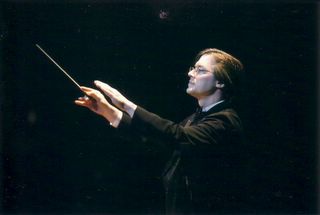Changes
When my adventure here in the Land of the Rising Sun first began, getting across Lake Kitaura to and from the Kashima Peninsula was never an easy task. Basically your options were:
- Going across the Jingu Bridge. This was the main bridge connecting Kashima City directly with the mainland. Unfortunately, it's on Route 51, which in those days was always bumper-to-bumper traffic moving at sub-walking speed. Even now it can tend to be a slow, aggravating route.
- Going across the Rokko (Great) Bridge. (I inserted the "great" because they call it an oh-hashi [大橋], which literally translates as "big bridge" or "great bridge".)I don't know whose idea it was to call this a "great" bridge. In fact, I'd like to track down the person who designed the thing in the first place and throttle him for the good of humanity. This has to be the most idiotic bridge ever conceived. The span, which links the villages of Kitaura (now part of Namegata City) and Taiyo (now part of Hokota City), consists of a single lane with turnouts. Getting onto it and off again requires passing through a gate that is only just wide enough for a full-sized car to get through without losing its mirrors and then carefully taking turns with oncoming traffic hopping from turnout to turnout. It's almost like someone was trying to fulfill a video game fantasy when they built it. At any rate, most people avoid it at all costs.
- Circling around from the north. Yes, bypassing Lake Kitaura altogether was always an option...if one didn't mind spending an extra half hour or more weaving around on narrow country roads.
- Circling around from the south. Going down through Chiba Prefecture and coming up via the various bridges into Kamisu offered better roads than the northern route but also meant a much longer distance. In other words, it wasn't any better.
The New Jingu Bridge was added in the early 2000's, paralleling the old Jingu Bridge a few hundred meters away along a new bypass route that leads directly to the expressway. Now they are once again continuing work on a (long-stalled) replacement for the
Yes, there has been an explosion of road and bridge improvements during the two decades I've been here. It has come together with an equally explosive increase in population and development that has completely transformed the landscape of this area. At the same time, it's kind of ironic to note that the Kitaura (Great) Bridge is now undergoing construction to repair sections that have become decayed or damaged during a little over a decade of use. It has been here only about half as long as I have been in Japan, and it's already looking old. What does that say about me?
Some other significant changes that have occurred over the past two decades include:
- The Death of Towns and Villages. The fact that Ibaraki Prefecture consisted mostly of rural towns and villages with very few cities was part of its charm. Then, in the early 2000's, Prime Minister Koizumi enacted a policy of consolidation as a way of trimming government costs. Suddenly the map underwent a sort of reverse mitosis. First the towns/villages of Kashima and Ono linked to become Kashima City. Then Itako and Ushibori became Itako City, while Kamisu and Hasaki united into Kamisu City. Then Aso, Tamatsukuri, and Kitaura disappeared into Namegata City as Hokota, Taiyo, and Asahi became Hokota City. In a disturbing game of big-eats-little, towns and villages with long histories were sucked into larger neighbors and quite often forced to bear the latters' names. Pretty soon the Ibaraki Prefecture map became a lot less complicated but a lot less recognizable. Unfortunately, far from saving costs, the consolidation drive quite often left the new cities with horrible debt as the burden of raising poorer former villages to the standards of the richer siblings fell onto the new municipal governments. Changes in public utility contracts and services forced by annexation sometimes boosted fees for some districts as much as 300%. Only now are things starting to settle back down into an uneasy equilibrium, but a lot of problems have yet to be solved.
- The Death of White Cars. In the '90s, the overwhelming majority of cars here were white, and any other color stuck out like a sore thumb. That is happily no longer the case. Now silver seems to be the color of choice for most, but it is not a whopping majority like white used to be.
- The Death of Full-Service Gasoline. Japanese gas stations have long been renowned for their excellent service. Entering one, one could expect to be descended upon by a whole team of workers in clean, well-pressed uniforms cheerfully shouting confirmations to each other as they gave the car a full going-over. Then the first self-service gas stations started appearing in the early to mid 2000's. At the time they were considered something of a curiosity. Strangely, they were also quite often more expensive than the regular stations. However, once the intimidation wore off and the prices started coming down, people started using them in greater numbers, which naturally meant that they began replacing the conventional full-service stations. As for me, a native of Oregon (a state in which self-service gasoline is illegal), it took a while for me to muster the courage to try one. Now I tend to prefer them. The full service is nice, but I like the speed and in-my-own-hands security that comes with pumping my own.
- The Death of the "Drop" and the "Squatty". Traditional Japanese "squatty" toilets were still very much the standard when I first arrived, and I had to get used to using them. I also had to get accustomed to the general lack of sewage systems, which meant many if not most toilets dropped directly into tanks which had to be hosed and vacuumed out at intervals and were often not well sealed (i.e. the smell of human waste was an inevitable part of everyday life everywhere you went). However, perhaps as a metaphor for things to come, in 1992 the drop-squatty toilet in my teacher's flat was replaced with a Western-style flush-toilet which was then connected with a newly-installed local sewer line. I considered myself extremely lucky. However, as sewers became more widespread in the early to mid '90s, flushing toilets became the norm rather than a luxury. By the turn of the century, Western-style toilets had also begun to displace the squatty. Now they are saying that many if not most Japanese children are unable to use squatties, partly because they don't know how, and partly because they no longer have the leg strength to squat long enough to empty themselves. All of the student restrooms at Ye Olde Academy now offer a choice of squatty or Western-style toilets, though the latter is by far the favorite. It's kind of a pity, really; squatties are definitely nice in winter, since your hind end never touches them.
- The Death of the Directory. You need to find someone, but you don't know their address or phone number? Tough. Not yours. It's extremely ironic that, in this age of cell phones, GPS navigation, and The Internet, phone directories are officially extinct. In fact, my school doesn't even give us a staff directory anymore. You see, the issue of personal privacy became a witch-hunt in the early 2000's. That's when the government decided that the white pages were evil and had them banned. In fact, you can't find any kind of phone/address directory for anything except businesses and services...unless you happen to be a business or service. They have access to personal phone and address information, particularly if they do anything that involves mailing. As for the rest of the population, well, we're all just SOL, which makes giving obligatory summer and winter gifts a far more complicated thing than it used to be.
- The Death of Manners. Japanese etiquette is extremely complex. There are just so many rules. Even the way you talk to someone is regulated by a system of codes and standards that dates back centuries. Children are sternly indoctrinated from a very young age so that they know all the proper turns and phrases. Or at least they used to be... Actually, from the mid '90s observance of proper speech and manners...or even awareness of it...by children took a sharp nosedive. This accompanied the explosive growth of parents who flip out if their kids get anything that even slightly smacks of discipline. Now there are actually quiz shows on TV based on knowledge of proper etiquette, and kids tend to get a big bang out of them simply because they see it as such a novelty.
- The Death of Self-Respect. I know this is kind of an iffy topic, and there are lots of opinions out there, but when I first came to this country it was still acceptable to be acceptable. The Yuppie '80s had only just ended, and the proper-and-successful style was still very much in. Then, in the late '90s, the key fashion points became "lazy", "sloppy", and "sleazy". Guys dressed (and acted) like they'd just woken up after a drunken party and thrown something on. Girls dressed (and acted) like whores. In fact, in the early 2000's, a lot of girls really were whores as the trend of "compensated dating" (a polite term for prostitution) caught on as a way to get easy money to feed the insatiable appetite for brand-name items. When that generation finished school and entered society, there was a sudden explosion of so-called NEETs (Not in Education, Employment, or Training), i.e. young freeloaders living on their parents' money. That seems to be on the decline now, and there are indications that pride is starting to become acceptable again, but it looks like a long, hard climb.









